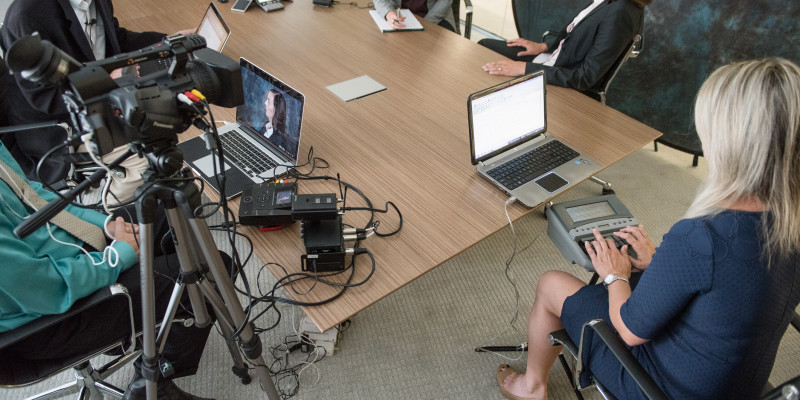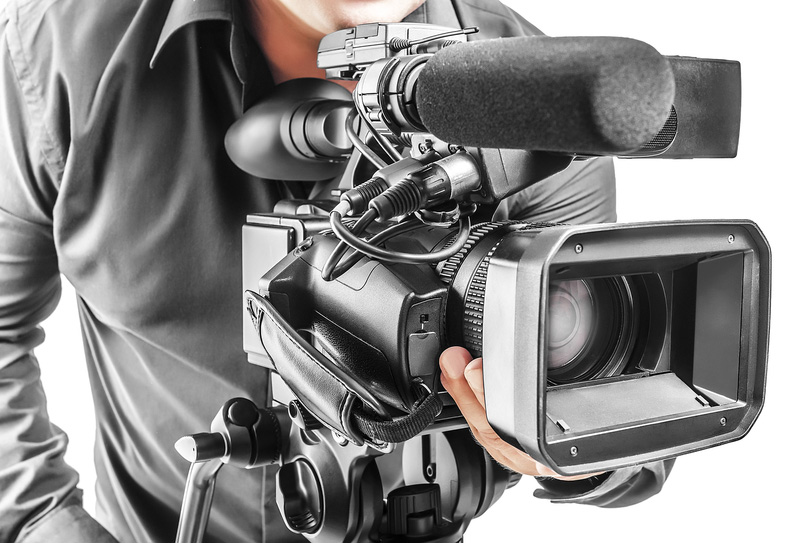Legal Videography: Transforming the Method Proof is Captured and Presented
Legal Videography: Transforming the Method Proof is Captured and Presented
Blog Article
Looking Into the Mechanisms of Legal Videography: Unveiling Its Operation in Shielding Genuine Aesthetic Testament for Judicial Proceedings
In the world of judicial process, the duty of legal videography stands as a foundation in maintaining and offering aesthetic evidence. As innovation continues to advancement, the devices behind legal videography have become significantly detailed, using a critical layer of authenticity to statements recorded on video. By delving into the operational complexities of legal videography, one can reveal the precise processes that guard the integrity of aesthetic evidence presented in courts - Legal Videography. This expedition not just clarifies the historic evolution of lawful videography yet additionally hints at the future patterns that may additionally reinvent just how aesthetic testaments are maintained in the realm of justice.
Historical Advancement of Legal Videography
Checking out the historic progression of legal videography discloses a significant makeover in the catching and discussion of aesthetic evidence within the legal landscape. In the past, legal process greatly counted on created transcripts and photographs to document events and provide evidence. With the advent of video innovation, the lawful industry witnessed a paradigm change in how visual testimony was recorded and presented.
The advancement of lawful videography can be mapped back to the late 20th century when improvements in video recording tools made it much more accessible for use in courts. This technical improvement not just boosted the precision and integrity of visual evidence yet also transformed the way instances were presented to judges and juries (Legal Videography). Attorneys began to acknowledge the convincing power of video recordings in sharing emotions, nuances, and non-verbal hints that written records or pictures alone can not record efficiently

Modern Technology Improvements in Video Clip Paperwork
What crucial technical developments have reinvented video clip paperwork in the lawful area? The legal field has seen significant developments in video clip documentation modern technology that have actually improved the credibility and reliability of visual proof in judicial proceedings. One of the crucial improvements is high-definition (HD) video recording capabilities, which supply crystal-clear pictures and sharp information that are vital for properly recording testaments, faces, and other visual cues. Additionally, the integration of timestamping and metadata features in video paperwork tools has actually enabled accurate documents of when and where the video clip was videotaped, making sure the honesty of the evidence offered in court.
Moreover, innovations in video file encryption and watermarking innovations have actually strengthened the protection and tamper-proof nature of video clip evidence, safeguarding it against unauthorized changes or tampering. Additionally, the arrival of cloud storage space solutions and remote accessibility abilities has streamlined the storage space, retrieval, and sharing of video proof, helping with seamless cooperation amongst lawyers and making certain reliable accessibility to critical visual testimonies when needed. These technological advancements in video clip documentation have undoubtedly transformed the legal area, enhancing the accuracy, credibility, and admissibility of aesthetic evidence in judicial proceedings.
Role of Legal Videographers in Court Settings
The evolution of video paperwork technology in the lawful area has necessitated an essential duty for legal videographers in court room settings, ensuring the stability and dependability of visual testaments offered during judicial process. Lawful videographers play a basic duty in catching and protecting precise visual evidence that can be crucial in court instances. Their obligation includes setting up equipment, recording procedures, and creating high-grade video clips that accurately show the events in the court room.
In court room settings, lawful videographers should adhere to strict guidelines and criteria to keep the credibility of the visual document. They must possess an eager eye for detail and an extensive understanding of lawful treatments to make certain that the video footage they record is a real representation of the occasions that transpired. Additionally, lawful videographers often function carefully with legal teams to guarantee that the video evidence straightens with the case's demands and can be efficiently provided in court to support the lawful debates being made. Generally, the duty of legal videographers in court settings is important in upholding the concepts of justice and making certain the openness of legal procedures.

Ensuring Admissibility and Honesty of Video Evidence
To preserve the integrity of aesthetic proof offered in lawful procedures, making sure the admissibility and honesty of video clip evidence is a crucial duty for lawful videographers. Admissibility describes the approval of proof by the court, and for video proof to find more information be admissible, it must meet specific criteria. Lawful videographers play a vital duty in ensuring that the videos they catch comply with the rules of evidence, such as authenticity, integrity, and importance.
Honesty of video evidence involves preserving the creativity and accuracy of the video footage from the time it is taped until it exists in court. This includes securely storing the video clip documents, recording the chain of custody, and preventing any kind of meddling or alterations. Lawful videographers should abide by strict methods to assure the stability of the video proof and protect against any obstacles to its credibility.
Future Trends in Legal Videography
Offered the increasing reliance on technology in lawful proceedings, lawful videographers are positioned to accept cutting-edge innovations forming the future of aesthetic testament capture and discussion. One of the famous trends on the perspective is the combination of online reality (VIRTUAL REALITY) and increased fact Clicking Here (AR) technologies right into lawful videography. These modern technologies have the prospective to change exactly how visual evidence is offered in courts, allowing juries and judges to immerse themselves in the scene of the crime or incident.
In addition, the usage of expert system (AI) algorithms for video clip analysis is expected to simplify the process of examining and evaluating large quantities of video clip footage. AI can assist in recognizing key moments, abnormalities, and patterns within video clips, enhancing the effectiveness of lawful investigations.

Conclusion
Finally, lawful videography has played an essential function in supplying authentic aesthetic proof for judicial proceedings. With technical innovations and the know-how of lawful videographers, the integrity and admissibility of video clip proof are guaranteed in court setups. As lawful videography continues to advance, it will be important to promote criteria that maintain the accuracy and reliability of visual testimony for the future of lawful proceedings.
Examining the historical imp source progression of lawful videography reveals a substantial change in the recording and discussion of aesthetic evidence within the legal landscape.The evolution of video paperwork innovation in the lawful area has demanded a crucial function for legal videographers in court setups, guaranteeing the honesty and integrity of aesthetic testimonies offered throughout judicial process. Additionally, legal videographers frequently function very closely with lawful groups to ensure that the video proof aligns with the case's demands and can be successfully presented in court to sustain the legal arguments being made.To maintain the reliability of aesthetic evidence presented in lawful proceedings, ensuring the admissibility and honesty of video clip proof is a vital obligation for lawful videographers. As legal videography continues to evolve, it will be crucial to maintain criteria that maintain the precision and reliability of visual testimony for the future of legal proceedings.
Report this page